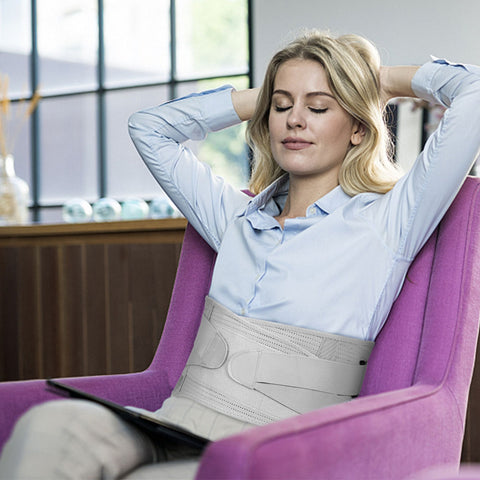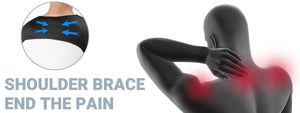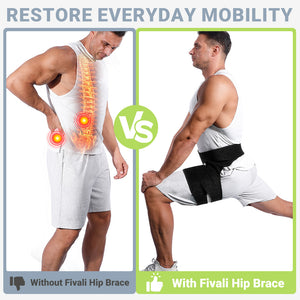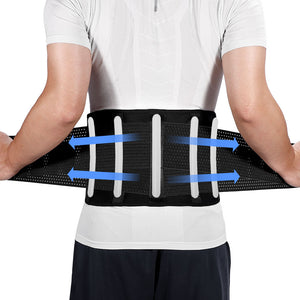How to Fix Lower Back Pain from Sitting

Lower back discomfort caused by sitting is a common problem that affects many people, particularly those who work long hours at a desk or in front of a computer. In this article, we'll go over the importance of appropriate sitting posture and a comfortable work environment in avoiding and treating lower back discomfort induced by sitting. Individuals can reduce the likelihood of discomfort and preserve a healthier spine by using these measures while working or sitting for extended periods of time.
Causes of Lower Back Pain
Lower back discomfort is a common ailment that can have a substantial impact on daily living. It can be caused by anything from poor lifestyle choices to underlying medical issues. Understanding the underlying causes of lower back pain is essential for both treatment and prevention.
- Poor Posture: Sitting, standing, or lifting heavy objects with poor posture can strain the muscles and ligaments in the lower back, causing pain.
- Muscular Strain: Overexertion, rapid movements, or wrongly moving large objects can cause muscular strains or sprains in the lower back, resulting in pain and discomfort.
- Herniated Disc: A herniated or slipped disc develops when the fragile inner core of a spinal disc protrudes through the outer covering, pressing on adjacent nerves and causing lower back pain.
- Degenerative Disc Disease: As we age, the discs between our vertebrae can degenerate, resulting in a loss of cushioning and increased friction between the bones, causing lower back pain.
- Spinal Stenosis: When the spinal canal narrows, it puts pressure on the nerves in the lower back, producing discomfort, numbness, and weakness in the legs.
- Arthritis: Conditions such as osteoarthritis and rheumatoid arthritis can cause inflammation and lower back discomfort in the joints of the spine.
- Obesity: Excess weight strains the lower back, putting pressure on the spine and supporting muscles, adding to pain and discomfort.
- Sedentary Lifestyle: A lack of regular physical exercise weakens the muscles that support the spine, leaving the lower back more susceptible to pain and damage.
- Stress and Emotional Factors: Emotional stress and tension can induce muscular stiffness and tightness in the lower back, resulting in discomfort.
It's worth noting that these are just a handful of the most common causes of lower back pain. Other variables that can contribute to this syndrome include specific medical illnesses, accidents, and genetic predisposition. Consultation with a healthcare professional is advised for an accurate diagnosis and treatment plan based on specific circumstances.
Prevention of Lower Back Pain
Lower back discomfort can be avoided by adopting particular habits and changing one's lifestyle to maintain a healthy spine. Here are some preventative measures for lower back pain:
- Choosing appropriate chairs and cushions: When it comes to preventing lower back discomfort, it's critical to choose chairs and cushions that give adequate lumbar support. Look for seats that can be adjusted in height, backrest angle, and armrests. Consider utilizing cushions or pillows to provide additional support for the lower back.
- Adjusting chair height and angle: To maintain ideal spine alignment, make sure your chair is adjusted to the proper height and angle. Your feet should be flat on the floor, and your knees should be at or slightly below hip level. Adjust the backrest angle to support your spine's natural curvature.
- Regular movement and stretching exercises: It is critical to engage in regular movement and stretching exercises to prevent lower back discomfort. Take frequent breaks from sitting and engage in exercises that enhance flexibility and strength of the muscles that support the spine. Simple exercises such as pelvic tilts, hamstring stretches, and back extensions can help increase flexibility and lessen the risk of lower back pain.
- Using lumbar support to maintain normal spine curvature: Lumbar support is essential for maintaining normal spine curvature. To maintain the natural curve of your spine while sitting, place a lumbar roll or cushion at the small of your back. This relieves lower back pain and improves good spinal alignment.
- Avoid Repetitive Strain: Repetitive actions and motions, such as lifting heavy objects, carrying bags, or typing for extended periods of time, can strain the lower back. To reduce strain, take regular breaks throughout repeated jobs and maintain appropriate body mechanics.
fivalifitness.com
Alleviating Lower Back Pain from Sitting

You might try the following strategies to relieve lower back discomfort caused by sitting:
- Adjust your posture: Sit with your back straight and your shoulders relaxed. Avoid slouching or hunching forward to avoid straining your lower back. To preserve normal spinal alignment, sit in a chair with sufficient lumbar support or insert a cushion behind your lower back.
- Use a belt for support: You can also try using a back brace to support your lower back and relieve lower back pain caused by sitting for long periods of time. Choose a belt that fits you well and secure it in the lumbar hollow of your lower back. A belt can provide additional support, help maintain the normal curvature of the spine, and reduce pressure on the lower back.
- Take regular breaks: every 30 minutes or so, stand up and move around to ease strain on your lower back. To keep your muscles active and prevent stiffness, stretch your legs, stroll around, or do easy exercises.
- Use good ergonomics: Make sure your workplace is properly set up. Adjust your chair and desk height so that your feet are flat on the floor and your knees are at a 90-degree angle. To minimize stressing your neck and upper back, place your computer screen at eye level.
- Exercising and stretching: Include exercises and stretches that target the muscles that support the lower back. Planks and bridges are two exercises that can help stabilize the spine. Stretching exercises such as knee-to-chest stretches and cat-cow positions can also increase flexibility and relieve lower back stress.
- Apply heat or cold therapy: Using a heating pad or taking a warm bath can help relax tense muscles and increase blood circulation. An ice pack wrapped in a cloth, on the other hand, can relieve inflammation and numb pain in the lower back.
- Consider utilizing over-the-counter pain relievers: If the pain persists, consider taking over-the-counter pain relievers such acetaminophen or nonsteroidal anti-inflammatory drugs (NSAIDs) to relieve the discomfort. However, before taking any drug, consult with a healthcare practitioner.
Remember, if the pain persists or worsens, seek urgent attention from a healthcare professional for proper diagnosis and treatment.
fivalifitness.com
Reference
Lower back pain when sitting? 3 Tips from a Physical Therapist
Back Pain From Sitting | Possible Reasons and Treatments
*Disclaimer
The information provided in articles written by Fivali is intended for educational and reference purposes only. The content on this website (www.fivalifitness.com) is not intended to diagnose, treat, cure, or prevent any disease. We do not recommend self-diagnosis or self-treatment based on the information provided in our articles. Always consult a qualified healthcare professional if you have any concerns about your health or well-being.
If you are experiencing any symptoms or discomfort, we strongly encourage you to seek medical attention from a qualified healthcare professional. Only a licensed healthcare practitioner can provide an accurate diagnosis and an appropriate treatment plan tailored to your individual needs.
-
Posted in
Back pain causes, Healthy Lifestyle, Joint, Recovery













